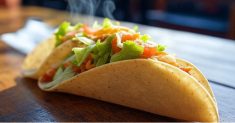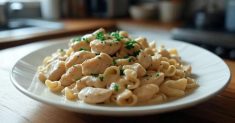The Country Women’s Association (CWA) has long been a cornerstone of Australian culinary tradition, especially in rural and regional areas. Among its many contributions to home cooking, the boiled fruit cake stands out as a beloved recipe passed down through generations. This moist, flavorful cake, rich with dried fruits and spices, embodies the warmth and hospitality synonymous with the CWA.
In this article, we’ll explore the origins of the CWA boiled fruit cake, provide a detailed recipe, and offer tips to perfect this classic dessert.
History of the Boiled Fruit Cake
The tradition of fruit cakes dates back centuries, with early versions serving as durable, energy-rich food for travelers and soldiers. In Australia, the boiled fruit cake became popular due to its simplicity and the availability of dried fruits.
The CWA, established in 1922, played a pivotal role in popularizing this recipe. Their cookbooks, filled with member-contributed recipes, became household staples. The boiled fruit cake, featured prominently, was celebrated for its ease of preparation and delightful taste. Over time, it became a staple at community gatherings, fundraisers, and family celebrations.
Ingredients Overview
To prepare the traditional CWA boiled fruit cake, you’ll need the following ingredients:
- Mixed Dried Fruits: A combination of sultanas, raisins, currants, and mixed peel.
- Glacé Cherries: Halved, for added sweetness and color.
- Butter: Unsalted, for richness.
- Brown Sugar: Provides a deep, molasses-like sweetness.
- Water: Used to boil the fruit mixture.
- Brandy or Sherry: Optional, adds depth of flavor.
- Plain and Self-Raising Flour: A mix ensures the right texture.
- Spices: Mixed spice and cinnamon for warmth.
- Bicarbonate of Soda: A leavening agent.
- Eggs: Lightly beaten.
- Citrus Zest: Orange and lemon zest for freshness.
These ingredients come together to create a moist, flavorful cake that improves with age.
Step-by-Step Preparation
Step 1: Prepare the Fruit Mixture
- In a large saucepan, combine:
- 750g mixed dried fruits
- 110g chopped dried apricots
- 110g halved glacé cherries
- 225g unsalted butter
- 165g brown sugar
- 200ml water
- 140ml sherry or orange juice
- 750g mixed dried fruits
- Bring the mixture to a boil over medium heat, stirring occasionally.
- Once boiling, reduce heat and simmer for 10 minutes.
- Remove from heat and allow to cool to room temperature.
Step 2: Prepare the Dry Ingredients
- In a large bowl, sift together:
- 110g plain flour
- 165g self-raising flour
- 1 teaspoon mixed spice
- 1 teaspoon ground cinnamon
- ½ teaspoon bicarbonate of soda
- 110g plain flour
Step 3: Combine Mixtures
- Add the cooled fruit mixture to the dry ingredients and stir until well combined.
- Add:
- 4 lightly beaten eggs
- Zest of 1 orange
- Zest of 1 lemon
- 4 lightly beaten eggs
- Mix until fully incorporated.
Step 4: Bake the Cake
- Preheat your oven to 160°C (140°C fan) or Gas Mark 3.
- Grease and line a 23cm round cake tin with baking parchment.
- Pour the batter into the prepared tin, smoothing the top.
- Bake for approximately 2½ hours, or until a skewer inserted into the center comes out clean.
- Allow the cake to cool in the tin before transferring to a wire rack.
5. Tips for the Perfect Boiled Fruit Cake
- Even Fruit Distribution: Ensure fruits are evenly mixed to prevent sinking.
- Proper Lining: Line the cake tin with multiple layers of baking paper to prevent overbrowning.
- Avoid Overmixing: Mix just until ingredients are combined to maintain a tender crumb.
- Check for Doneness: Use a skewer to test; it should come out clean.
- Cool Gradually: Allow the cake to cool in the tin to prevent cracking.
Storage and Maturation
Boiled fruit cakes are known for their longevity and improved flavor over time.
- Storage: Wrap the cooled cake in baking paper and foil. Store in an airtight container in a cool, dark place.
- Maturation: For enhanced flavor, “feed” the cake by brushing it with brandy or sherry every week for up to a month before serving.
- Shelf Life: Properly stored, the cake can last for several months.
Variations and Modern Twists
While the traditional recipe is cherished, variations have emerged to cater to different preferences:
- Eggless Version: Use egg substitutes like applesauce or commercial egg replacers.
- Gluten-Free: Replace flours with gluten-free alternatives.
- Alcohol-Free: Use fruit juices instead of alcohol for soaking and feeding.
- Nut Additions: Incorporate chopped nuts like almonds or walnuts for added texture.
- Spice Variations: Experiment with spices like nutmeg or allspice for different flavor profiles.
Cultural Significance
The boiled fruit cake holds a special place in Australian culture:
- Festive Celebrations: A staple during Christmas and other holidays.
- Community Events: Commonly featured at CWA gatherings, fundraisers, and local fairs.
- Family Traditions: Recipes often passed down through generations, symbolizing family heritage.
- Culinary Competitions: Featured in baking contests, showcasing home-baking skills.
Conclusion
The CWA Boiled Fruit Cake is more than just a classic recipe—it’s a cherished symbol of Australian tradition and community spirit. Handed down through generations, this moist, fruit-packed cake captures the heart of homemade baking. Its simplicity, long shelf life, and rich flavor make it a favorite for festive occasions, family gatherings, and everyday enjoyment. Whether you’re following the original CWA method or adding your own twist, the result is always a comforting, nostalgic treat. Beyond taste, it reflects the values of sharing, resilience, and togetherness that the Country Women’s Association stands for. If you’re new to boiled fruit cakes or looking to revisit a childhood favorite, this recipe is a perfect place to start. Bake it once, and it may just become a tradition in your own kitchen too.
















